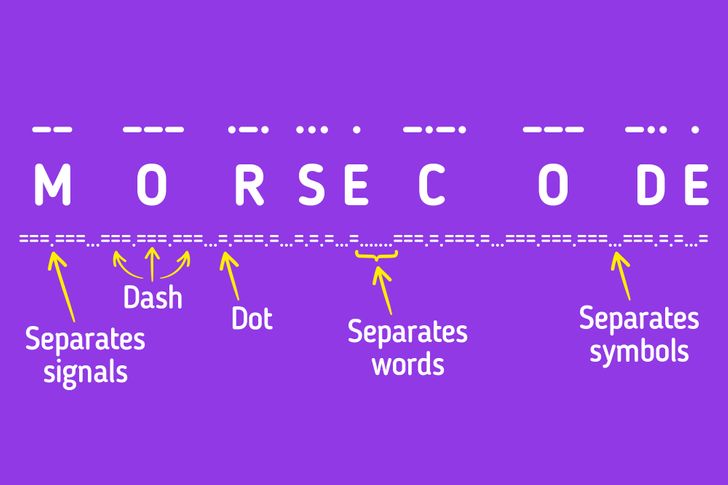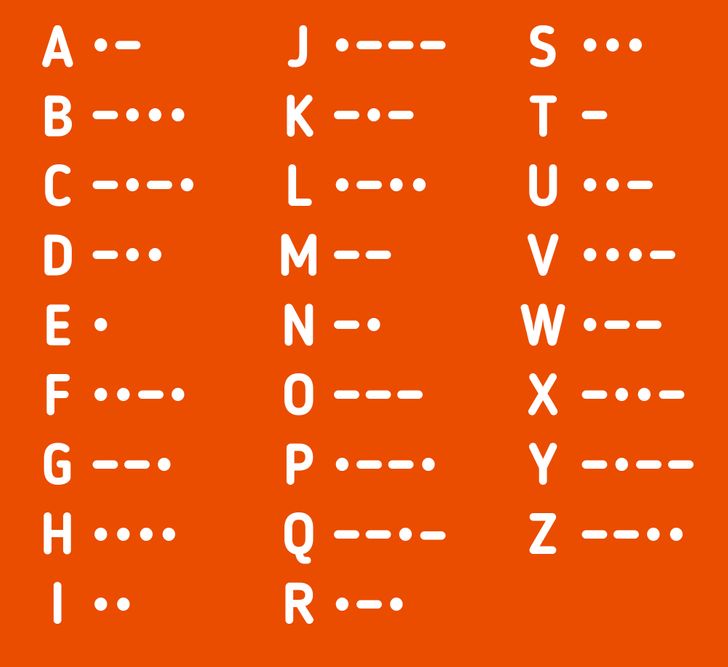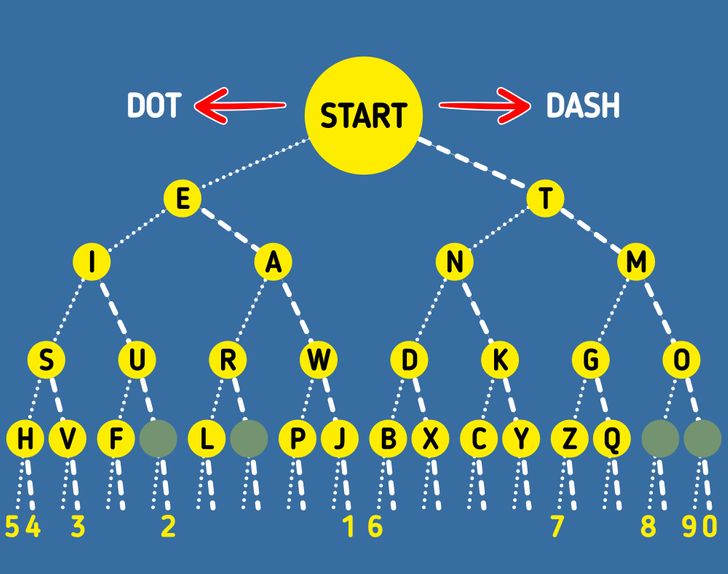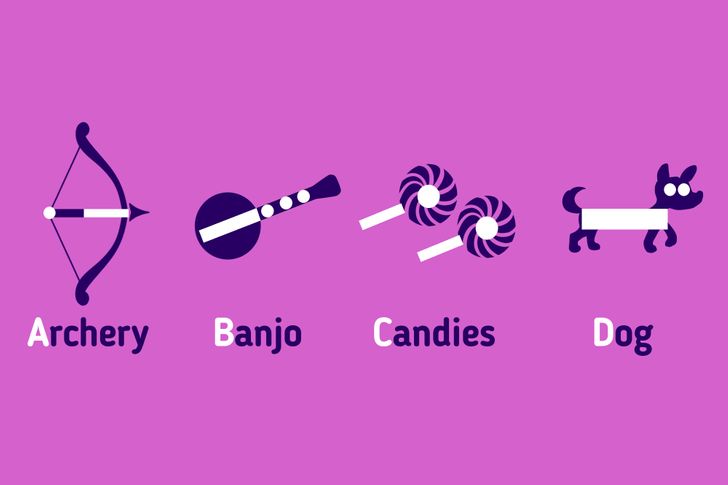How to Learn Morse Code, and Why We Still Use It
Morse code was invented to encrypt information by turning it into a combination of short and long signals that look like dots and dashes. In the past, Morse code was widely used, but it’s still good to be able to use it today in case of an emergency.
5-Minute Crafts explains what Morse code is and how to learn to understand it and use it in real life.
Who invented Morse code and why
Morse code is a method of encoding symbols to send messages using a series of long and short electric signals. A short signal is a dot and a long signal is a dash.
Alphabet letters, numbers, punctuation marks, different symbols, and words are encoded in a sequence of short and long signals.
Samuel Morse is the inventor of Morse code. At the beginning of the nineteenth century, sending letters was the most popular and widespread way of sending messages. At the same time, several scientists in different countries were working on the first models of telegraphs that could quickly send simple signals using electricity. A special encryption method had to be developed to use them. Thanks to Samuel Morse, the method solved this task in a simple and elegant way, presenting alphabet letters in different combinations of short and long signals — dots and dashes. As a result, this method became the main language for the telegraph.
In the past, Morse code was widely used. This code could be used in many different ways, like, for example, with pen and paper, light, sound, and even eyes or fingers. Today, Morse code is still used in aviation and shipping, and as a way of communication for people with impaired functionality.
How Morse code works
The encoding method is based on 5 elements:
1. A short signal or a dot
2. A long signal or a dash
3. A pause or an element between dots and dashes that are as long as a short signal or dot, and short and long signals that are always separated with a pause
4. A pause or a short silence (between letters) that is as long as 3 short signals or dots
5. A pause or average silence (between words) that is as long as 7 short signals or dots
Knowing all this, Morse code should look like this:


For example, E is the most frequent letter, so it’s encoded in the simplest and shortest signal — a dot. Whereas for encoding X or Z, you need combinations of 2 dots or 2 dashes. Such encoding helps to memorize the Morse code and the signals become simpler.
The picture above shows the international Morse code for the Latin alphabet.
To speed up the process of sending information, some words or phrases are abbreviated. For example, TU in English is “Thank you.” There are numbers that stand for things as well, like 88, which is “love and kisses.” There are also Q-codes. These are international codes starting with Q and containing only 3 symbols, but they might mean long sentences. For example, QTC means “I have ____ telegrams for you (or for ____).”
Despite the popular opinion, SOS is not an abbreviation or an acronym. It’s just the longest Morse code letter containing 9 symbols. So this sequence is transmitted without any spaces between the letters.
How to learn Morse code
Despite the language you speak, it’s better to learn the international Morse code because most people “speak” it. And when you learn it, it will be easier for you to learn the additional symbols in your language.
It’s easier to learn the letters by memorizing their features:
- 2 letters that consist of just 1 symbol: E is 1 dot, and T is 1 dash.
- 4 letters that consist of 2 symbols: A, I, M, and N.
- Some letters are similar to others if you write their code down in reverse order. For example, A is a dot and dash, and N is a dash and dot.
- Letters D, G, K, O, R, S, U, and W consist of 3 symbols.
- Letters B, C, F, H, J, L, P, Q, V, X, Y, and Z consist of 4 symbols.
You might find these tools for memorizing the Morse code useful. They are different applications you can download to learn the letters as a game. One of the apps draws funny pictures, like the one above that help you learn the code through the associations between the letters, the words that start with them, and the signals. You can download the picture here.

A good way to learn and practice understanding the Morse code symbols is the exercise where the code is structured as the picture above.
Make or print out this picture. Take a pencil and get ready to move along the dotted line. Start and turn on the audio of the code.
- Move down the line of dots every time you hear a short signal.
- Move down the line of dashes every time you hear a long signal.
For example, you hear 1 long signal, and then 2 short signals. You move right and then again down but left, and then down but also left. And you find yourself on the letter D. Right down D and go back to the start.
This is how you listen and find every symbol. Repeat the exercise for 10 minutes a day.
